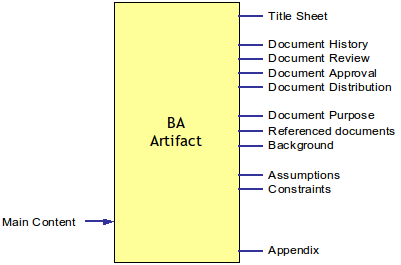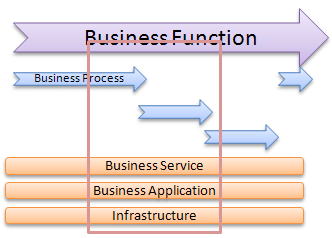Business analysis documents: Current State Analysis
This article is the first in a series describing business analysis artifacts, their purpose and internal structure
I’ll talk about these documents:
- Current state analysis document
- Project vision document
- Solution vision document
- Business requirements document
- Business process design document
- Use case model document
- Use case specification document
- System-wide requirements document
- Solution glossary
Once I’ve described those, I’ll go on to show the relationships between the artifacts.
The picture below illustrates the information common to every artifact. The area indicated by the “Main content” arrow should be filled by the appropriate document-specific content discussed throughout this series of articles:

Current state analysis
Once a project has been mandated and the Project Initiation document (PID) is drafted, a business analyst can start to work on requirements gathering. In my experience the best way to tackle this task is to start from current state analysis. It helps understand the business need, primary pain points, business processes affected, the stakeholders involved in these processes, and so on.
The area of the current state analysis is illustrated below:

The main purpose of the analysis is to present the “AS IS” state: the existing business context, background, business functions and existing business processes, and finally stakeholders involved in these business processes. Depending on the project nature, some components of the underlying infrastructure can be included in the document as well.
A Current State Analysis document lists the key pain points within the identified business processes and tasks within them, and highlights the areas where a change is expected.
The last section of the document is about presenting recommendations. It recaps the key findings and lists the key changes expected. Any caveats should be presented here as well.
The content structure of the Current State Analysis document is presented below:

This artifact serves as a foundation or a reference point for other artifacts produced by a business analyst. The other documents will be discussed in the following articles.

New! We have published a new book: A Navigator to Business Analysis.
Over 400 pages of practical, useful material will help you build your skills and advance your career! Find out more and get free excerpt.
Free course: BABOK 3 Navigation Maps
Subscribe and get an overview of the knowledge areas in BABOK 3. (Very occasionally, we may let you know about discounts and specials).